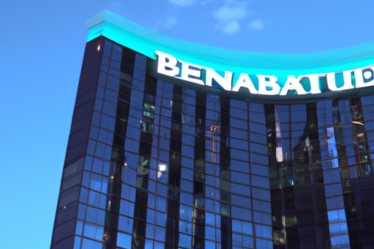
Dynamic Pricing: A Key Strategy for Hotel Revenue Optimization
Dynamic Pricing: A Key Strategy for Hotel Revenue Optimization
When it comes to maximizing hotel revenue, effective pricing strategies play a crucial role. One such strategy that has gained significant popularity in recent years is dynamic pricing. This approach allows hotels to adjust their prices in real-time based on various factors, ultimately optimizing revenue and maximizing profits.
Dynamic pricing is a strategy that involves setting flexible prices for hotel rooms based on demand, seasonality, and other market conditions. By constantly monitoring and analyzing these factors, hotels can adjust their prices accordingly to attract more guests during low-demand periods and maximize revenue during high-demand periods.
One of the key benefits of dynamic pricing is its ability to capture the true value of a hotel room. Instead of relying on fixed rates that may not accurately reflect market conditions, dynamic pricing allows hotels to charge higher prices during peak seasons and lower prices during off-peak seasons. This ensures that hotels are not leaving money on the table and are maximizing their revenue potential.
To implement dynamic pricing effectively, hotels need to have access to real-time data and analytics. This includes information on competitor pricing, historical booking patterns, and market trends. By leveraging this data, hotels can make informed decisions about when and how to adjust their prices to optimize revenue.
Another important aspect of dynamic pricing is the use of segmentation. Hotels can segment their customer base into different groups based on factors such as demographics, booking behavior, and preferences. By understanding the needs and preferences of each segment, hotels can tailor their pricing strategies to attract and retain customers from each group. For example, hotels can offer discounted rates to business travelers during weekdays and special packages for families during weekends.
In addition to segmentation, hotels can also use dynamic pricing to target specific market segments. By offering personalized pricing and promotions to different customer segments, hotels can increase their chances of attracting and converting potential guests. For example, hotels can offer discounted rates to loyalty program members or exclusive deals to customers who have previously booked through their website.
While dynamic pricing can be a powerful strategy for revenue optimization, it is important for hotels to strike a balance between maximizing revenue and maintaining customer satisfaction. Setting prices too high during peak seasons may deter potential guests, while setting prices too low during off-peak seasons may result in missed revenue opportunities. Hotels need to carefully analyze market conditions and customer behavior to find the optimal pricing strategy that maximizes revenue without compromising customer satisfaction.
In conclusion, dynamic pricing is a key strategy for hotel revenue optimization. By adjusting prices in real-time based on demand, seasonality, and other market conditions, hotels can capture the true value of their rooms and maximize revenue potential. To implement dynamic pricing effectively, hotels need access to real-time data and analytics, as well as a deep understanding of their customer base. By striking a balance between maximizing revenue and maintaining customer satisfaction, hotels can successfully leverage dynamic pricing to drive profitability and stay ahead in a competitive market.
The Role of Seasonality in Hotel Pricing Strategies

When it comes to maximizing hotel revenue, pricing strategies play a crucial role. One important factor that hoteliers need to consider is seasonality. Seasonality refers to the fluctuation in demand for hotel rooms based on the time of year. Understanding and effectively managing seasonality can greatly impact a hotel’s revenue.
Seasonality affects hotels in various ways. During peak seasons, such as holidays or popular events, demand for hotel rooms tends to be high. This allows hotels to charge higher rates and maximize their revenue. On the other hand, during off-peak seasons, demand decreases, and hotels may need to lower their rates to attract guests. By adjusting prices based on seasonality, hotels can optimize their revenue and ensure a steady flow of guests throughout the year.
To effectively manage seasonality, hoteliers need to analyze historical data and identify patterns in demand. By studying past booking trends, hotels can determine which months or seasons experience high or low demand. This information can then be used to develop pricing strategies that align with the expected demand fluctuations.
During peak seasons, hotels can implement dynamic pricing strategies. Dynamic pricing involves adjusting room rates in real-time based on demand and availability. By using revenue management systems, hotels can automatically increase rates when demand is high and decrease them during periods of low demand. This allows hotels to capture the maximum revenue possible during peak seasons.
During off-peak seasons, hotels can adopt different strategies to attract guests. One approach is to offer discounted rates or special promotions. By offering lower prices, hotels can entice guests who may be more price-sensitive during these periods. Additionally, hotels can focus on marketing campaigns that highlight the unique experiences or attractions available during the off-peak season. This can help create a demand and encourage guests to choose their hotel over competitors.
Another important aspect of managing seasonality is forecasting. By accurately predicting future demand, hotels can adjust their pricing strategies accordingly. This involves analyzing historical data, market trends, and upcoming events or festivals that may impact demand. By having a clear understanding of the expected demand, hotels can set their prices at the optimal level to maximize revenue.
It is also essential for hotels to monitor their competitors’ pricing strategies. By keeping an eye on the rates offered by other hotels in the area, hotels can ensure that their prices remain competitive. If a hotel is consistently charging significantly higher rates than its competitors, it may struggle to attract guests, especially during off-peak seasons. Regularly reviewing and adjusting pricing strategies based on market conditions can help hotels stay ahead of the competition and maximize revenue.
In conclusion, seasonality plays a significant role in hotel pricing strategies. By understanding and effectively managing seasonality, hotels can optimize their revenue throughout the year. This involves analyzing historical data, implementing dynamic pricing strategies during peak seasons, offering discounts or promotions during off-peak seasons, accurately forecasting demand, and monitoring competitors’ pricing strategies. By adopting these strategies, hotels can ensure a steady flow of guests and maximize their revenue potential.
Leveraging Technology for Effective Hotel Revenue Management
Effective Pricing Strategies to Maximize Hotel Revenue
In today’s competitive hospitality industry, hotel revenue management plays a crucial role in maximizing profits. One key aspect of revenue management is pricing strategies. By implementing effective pricing strategies, hotels can optimize their revenue and stay ahead of the competition. Leveraging technology is a powerful tool that can help hotels achieve this goal.
Technology has revolutionized the way hotels operate, and revenue management is no exception. With the help of advanced software and analytics, hotels can now make data-driven decisions to set optimal prices for their rooms. This allows them to maximize revenue while also ensuring high occupancy rates.
One popular pricing strategy is dynamic pricing. This strategy involves adjusting room rates based on various factors such as demand, seasonality, and even competitor pricing. By analyzing historical data and market trends, hotels can determine the optimal price for each room at any given time. Dynamic pricing allows hotels to capitalize on high-demand periods by increasing prices, while also attracting guests during low-demand periods by offering discounted rates.
Another effective pricing strategy is segmentation. This involves dividing the market into different segments based on factors such as customer preferences, demographics, and willingness to pay. By tailoring prices to each segment, hotels can attract a wider range of guests and maximize revenue. For example, business travelers may be willing to pay higher rates for added amenities and convenience, while budget-conscious leisure travelers may prefer lower rates with fewer frills.
To implement these pricing strategies effectively, hotels need to leverage technology. Revenue management systems can analyze vast amounts of data and provide valuable insights to hoteliers. These systems can track market demand, competitor pricing, and customer behavior in real-time, allowing hotels to make informed pricing decisions. By automating the pricing process, hotels can save time and resources while ensuring accuracy and consistency.
Furthermore, technology can also help hotels optimize their distribution channels. Online travel agencies (OTAs) and global distribution systems (GDS) play a significant role in hotel bookings. By integrating revenue management systems with these channels, hotels can ensure that their prices are updated across all platforms in real-time. This eliminates the risk of overbooking or underpricing and ensures that hotels are maximizing revenue from every booking channel.
In addition to pricing strategies, technology can also assist hotels in implementing effective revenue management practices. Forecasting tools can predict future demand and help hotels adjust their pricing strategies accordingly. By accurately forecasting demand, hotels can optimize their inventory and avoid overbooking or underselling rooms.
Moreover, technology can also help hotels monitor and analyze customer feedback and reviews. By understanding guest preferences and satisfaction levels, hotels can make necessary improvements to their offerings and pricing strategies. This continuous feedback loop allows hotels to stay competitive and ensure that their pricing strategies align with customer expectations.
In conclusion, effective pricing strategies are essential for maximizing hotel revenue. Leveraging technology is a powerful tool that can help hotels implement these strategies successfully. By utilizing advanced software, analytics, and revenue management systems, hotels can set optimal prices, segment their market, and optimize their distribution channels. Technology also enables accurate forecasting and continuous monitoring of customer feedback, allowing hotels to stay ahead of the competition and maximize their revenue potential.


